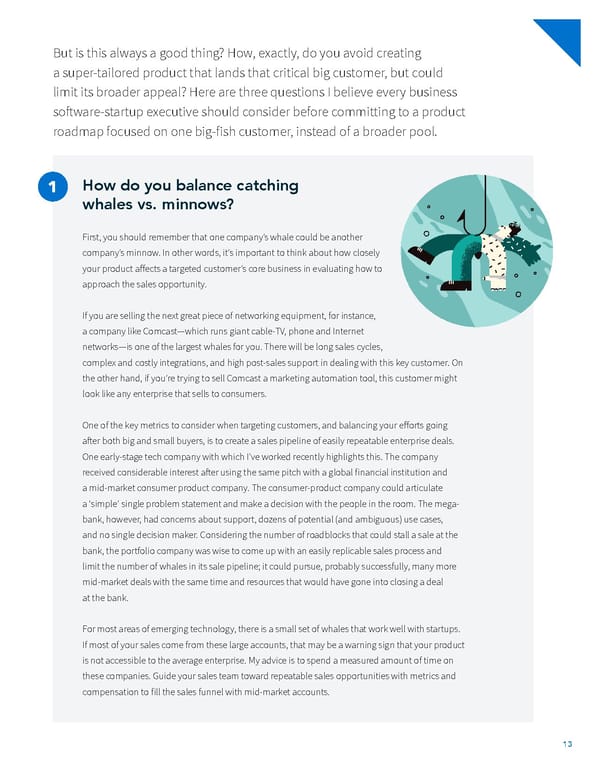But is this always a good thing? How, exactly, do you avoid creating a super-tailored product that lands that critical big customer, but could limit its broader appeal? Here are three questions I believe every business sotfware-startup executive should consider before committing to a product roadmap focused on one big-ifsh customer, instead of a broader pool. How do you balance catching whales vs. minnows? First, you should remember that one company’s whale could be another company’s minnow. In other words, it’s important to think about how closely your product affects a targeted customer’s core business in evaluating how to approach the sales opportunity. If you are selling the next great piece of networking equipment, for instance, a company like Comcast—which runs giant cable-TV, phone and Internet networks—is one of the largest whales for you. There will be long sales cycles, complex and costly integrations, and high post-sales support in dealing with this key customer. On the other hand, if you’re trying to sell Comcast a marketing automation tool, this customer might look like any enterprise that sells to consumers. One of the key metrics to consider when targeting customers, and balancing your efforts going atfer both big and small buyers, is to create a sales pipeline of easily repeatable enterprise deals. One early-stage tech company with which I’ve worked recently highlights this. The company received considerable interest atfer using the same pitch with a global ifnancial institution and a mid-market consumer product company. The consumer-product company could articulate a ‘simple’ single problem statement and make a decision with the people in the room. The mega- bank, however, had concerns about support, dozens of potential (and ambiguous) use cases, and no single decision maker. Considering the number of roadblocks that could stall a sale at the bank, the portfolio company was wise to come up with an easily replicable sales process and limit the number of whales in its sale pipeline; it could pursue, probably successfully, many more mid-market deals with the same time and resources that would have gone into closing a deal at the bank. For most areas of emerging technology, there is a small set of whales that work well with startups. If most of your sales come from these large accounts, that may be a warning sign that your product is not accessible to the average enterprise. My advice is to spend a measured amount of time on these companies. Guide your sales team toward repeatable sales opportunities with metrics and compensation to ifll the sales funnel with mid-market accounts. 13
 Guide to Breaking into the Enterprise Market Page 12 Page 14
Guide to Breaking into the Enterprise Market Page 12 Page 14